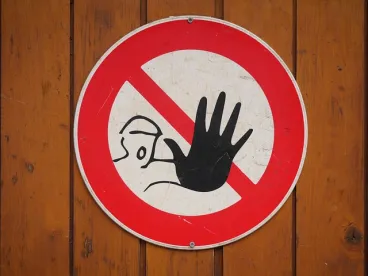**UPDATE: This article was updated on September 25, 2020 to reflect updates and developments in the law.**
The Workers Adjustment and Retraining Notification (WARN) Act requires employers with over 100 employees to follow certain notice requirements when laying off employees. 20 C.F.R. 693.6. WARN requires employers with 100 employees or more to give affected workers at least 60 days’ notice of any plant closing or mass layoff, with exceptions for, among others, “unforeseeable business circumstances.”
However, states can enact their own “mini-WARN” laws if the laws are (1) more protective to employees; (2) apply to smaller businesses; or (3) do not conflict with the federal requirements. Twenty-three* have chosen to develop their own requirements that may track or modify the federal requirements: California, Connecticut, Delaware, Georgia, Hawaii, Illinois, Iowa, Kansas, Louisiana, Maine, Maryland, Massachusetts, Michigan, Minnesota, New Hampshire, New Jersey, New York, North Dakota, Ohio, Oregon, Tennessee, Vermont, and Wisconsin.
A selection of these states’ requirements are below; however, this list is not exhaustive and you should always make sure to confer with your outside counsel regarding your state’s specific requirements.
California: California’s “CA-WARN” has substantial differences from its federal counterpart: it applies to employers of 75 persons instead of 100, is required when 50 or more employees are laid off in a 30-day period (regardless of the percentage of the workforce) and does not have a “temporary facility closing” exception. However, in light of the COVID-19 crisis, California has temporarily suspended its 60-day notice requirement.
Connecticut: Connecticut’s law requires only that a closing employer continue its employee’s health insurance for 120 days; it does not add on any additional notice requirements.
Illinois: Illinois’ notice requirement is applicable to employers who have more than 75 employees (exclusive of part-time employees) or more than 75 employees who work at least 4,000 hours per week in the aggregate (exclusive of overtime). These employers must give notice if they are laying off 33 percent of their workforce (at least 25 employees) or 250 employees (all excluding part-time workers). Illinois’ Department of Labor has specifically stated that the 90 day requirement has not been suspended in light of the COVID-19 pandemic.
Maryland: Effective October 1, 2020, employers with 50 or more employees must provide 60 days’ advance notice before imposing a “reduction in operations.” The new law defines a “reduction in operations” as a relocation of an employer’s operation, the shutdown of a workplace, or the shutdown of a portion of the workplace reducing the number of employees by 15 employees over a three-month period or 25 percent, whichever is greater.
New York: New York’s notice requirement is applicable to employers who have more than 50 employees or 2000 hours per week in the aggregate. However, these employers may not have to give notice unless they are separating a certain amount of employees, determined by the reason for the separations (plant closing, layoff, relocation or a reduction in hours). Employers required to give notice must do so 90 days before any layoffs, which can be reduced if the criteria for “faltering business, unforeseeable business circumstances or natural disaster exceptions” is met. New York’s Department of Labor has specifically stated that the 90 day requirement has not been suspended in light of the COVID-19 pandemic.
New Jersey: As we’ve covered, New Jersey recently modified its notice requirements, which will go into effect which will go into effect 90 days after Governor Phil Murphy’s stay-at-home executive order is terminated. Under these new requirements, severance pay is now guaranteed to terminated employees. Notice requirements are triggered when a transfer or termination of operations results in the loss of 50 or more employees.
Ohio: Ohio’s mini-WARN statute applies to employers with at least one employee and requires notice when 50 or more employees are laid off in a seven-day period. Employers must provide three working days’ notice before the layoff instead of the federal 60 day requirement.
*Kansas does not have its own law, but any mass layoff requires Secretary of Labor approval. Additionally, Pennsylvania does not have its own requirement but the City of Philadelphia does. Alabama employers must notify the Unemployment Compensation Call Center when laying off 25 or more employees at the same time.
Given the speed with which COVID-19 has prompted a wide-range of legal action at the federal, state and local governmental levels, this blog article is not exhaustive. Things are changing quickly and there is no clear-cut authority or bright line rules. This is not an unequivocal statement of the law, but instead represents our best interpretation of where things currently stand. This post does not address the potential impacts of the numerous other local, state and federal orders that have been issued in response to the COVID-19 pandemic.



 />i
/>i

